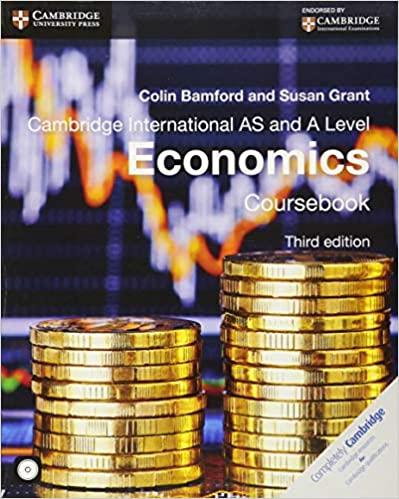Question
Suppose a small economy has two income tax rates: 15% for all income up to $50,000 and 30% for any income earned above $50,000. Suppose
Suppose a small economy has two income tax rates: 15% for all income up to $50,000 and 30% for any income earned above $50,000. Suppose that the economy has a Government Budget for this year (year 1) of $58,500, and a total of five individuals earning the following income: Amy $20,000, Betty $40,000, Charlie $60,000, Dimitry $80,000, Evelyn $100,000. In chapter 5 we saw that GDP can be calculated in two ways, via the expenditure approach or the income approach, and that when the income approach is used, there must be adjustments made to National Income, specifically adding the Consumption of Fixed Capital and a Statistical Discrepancy. For the sake of simplicity, let's imagine that National Income is equal to GDP, in other words the Fixed Capital and the Statistical Discrepancy are equal to zero.
11.Assuming a Marginal Propensity to Save (MPS) of 20% or 0.20, use the Keynesian Multiplier to determine the additional amount of government spending required.(10 points)
Step by Step Solution
There are 3 Steps involved in it
Step: 1

Get Instant Access to Expert-Tailored Solutions
See step-by-step solutions with expert insights and AI powered tools for academic success
Step: 2

Step: 3

Ace Your Homework with AI
Get the answers you need in no time with our AI-driven, step-by-step assistance
Get Started


